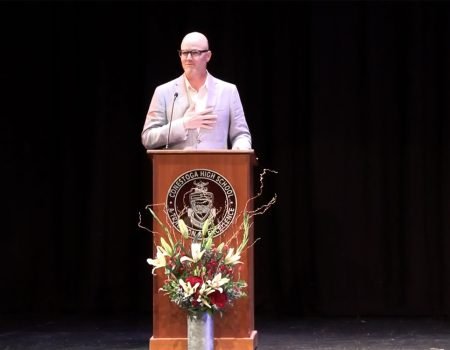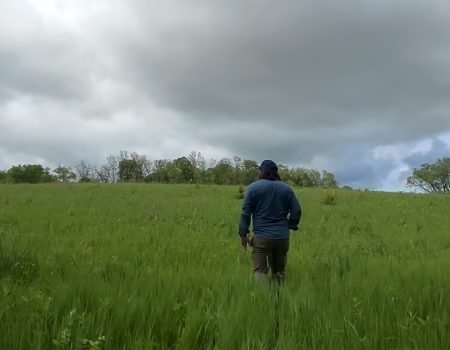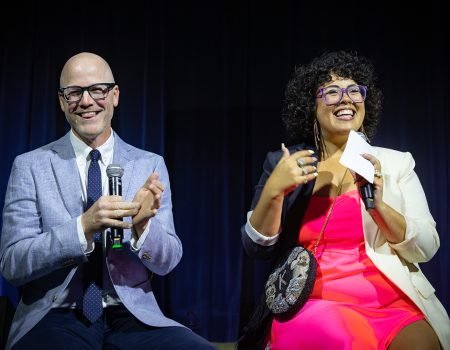Let’s Sing Songs (To Spite The Devil)
I have a long standing policy of not stepping foot inside a venue until I’m booked to step onto said venue’s stage. With CBGB, this proved a wise policy.
Founded in 1973, CBGB (aka Country Bluegrass Blues and Other Music for Uplifting Gormandizers) became the much-celebrated birthplace of punk. The Ramones, Patti Smith, Television, Blondie and Talking Heads laid a foundation for a decidedly American version of loud, fast, and out of control. Gritty, grimy, and heavily distorted, the sound (and the style) made nearly every band that followed — from REM to Green Day to U2 — possible.
More than that, CBGB was shorthand for New York City Rock. Passing through New York? Gotta’ play CBs. The list of those who did is staggeringly diverse: AC/DC, B-52’s, Bad Religion, Crowded House, Dave Matthews, Guns N’ Roses, Jeff Buckley, Joan Jett, Korn, Pearl Jam, The Police, Sonic Youth, Sould Asylum, They Might Be Giants…
And me.
I performed at CBs three times: June 16, 1998; October 6, 1998; and March 20, 2002 (click here to watch an MTV News segment about the latter).
I don’t remember much of my performances, except that they were extra-awesome, and under-attended (kidding, about the former, anyway). At the time, I was intent on rocking. I played electric guitar, and sometimes wore pleather pants and fingernail polish. It wasn’t pretty.
But I remember the place, and the reverence and reticence I felt before passing through the threshold. This was, after all, hallowed ground. And while many mediocre matinee bands had stood on that stage, so had Joey Ramone, David Byrne, Debby Harry, and even my hero, Michael Stipe.
I remember the low ceiling over the stage, and fireproofing hanging from the rafters. I remember warm beer, dumpster-diving furniture, and urinals caked with grime. I remember struggling to fill the long, narrow room with noise. And I remember slapping a Benjamin Wagner sticker on the men’s room wall, before slipping out the door without getting paid (again).
But I also remember feeling as though I’d accomplished something. I remember thinking that, for all the years of legend that preceded it, and for all the years I’d read about the place in Rolling Stone, I’d finally done something fairly unique, like climbing Kilimanjaro or visiting Machu Picchu. For better or worse, anticlimax or not, I was one in a million — or, by my calculation, one in 225,000 (thirty years of five bands a night with four guys per band). Whatever the math, and however little luster remained on the place, no one can take that away.
In the wee hours of the morning, of course, CBGBs shuttered its doors for the last time. Hilly lost his lease, and is moving to (where else) Las Vegas.
“It’s a symptom of the empty new prosperity of our city,” Patti Smith told told The Times.
And she’s right. When I first visited The Bowery in the early 90s, there was still a whiff of danger in the air. By the time I performed there, the streetlights had new bulbs, and cute little Irish bars were popping up all over. Now there’s a smoked glass condo overhead, and a Whole Foods across the street.
More important than the neighborhood, or the institution, though, is the venue’s legacy. Lenny Kaye told The New York Times, “When I go into a rock club in Helsinki or London or Des Moines, it feels like CBGB to me there.”
I played my first rock show at The Lost Horizon in Syracuse, New York. It was a cavernous, filthy space with black paint and band stickers on the walls. When I played CBs ten years later, I gathered that The Lost was a ruse. Likewise The Reverb in Iowa Falls, Sokol Underground in Omaha, Nebraska, and a thousand other poorly lit stages.
And so it is, CBGBs — like The Continental, The Bottom Line, Fez, and Luna Lounge before it — is closed. Smith, for one, refuses to mourne.
“Kids’ll find some other club,” she said. “They’ll find a place that nobody wants, and one guy who believes in [them], and just do [their] thing. Anybody can do that, anywhere in the world, any time.”



